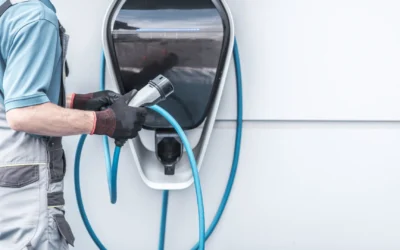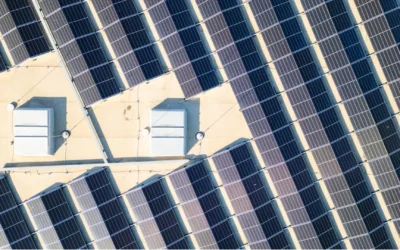- The utilization of renewable generation is limited by the amount and duration for which energy can be stored on the electricity grid.
- A greater penetration of renewables (greater than 80%) will require the deployment of LDES.
- New electro chemistries may lead to a breakthrough in LDES technologies.
Globally, the utilization of renewable generation is limited by the amount and duration for which energy can be stored on the electricity grid. This is a major bottleneck in achieving deeply decarbonized grid which not only has deeper penetration of renewables (greater than 80%) but is necessary to curtail global warming and achieve climate goals in the long run.
This problem can be resolved with the deployment of Long Duration Energy Storage which essentially refers to systems which could store energy for long period of time (Power Technology Research considers discharge time beyond 8 hours to be LDES).
In this introductory article we will be discussing promising LDES technologies including pumped hydro storage, liquid air energy storage, compressed air energy storage, flywheel energy storage, thermal energy storage, hydrogen energy storage and battery energy storage.
Promising technologies for LDES
There are several LDES competing technologies, and these are some of the most promising:
- Pumped Hydro Storage (PHS)
- Liquid Air Energy Storage (LAES)
- Compressed Air Energy Storage (CAES)
- Flywheel Energy Storage (FES)
- Thermal Energy Storage (TES)
- Hydrogen Energy Storage
- Battery Energy Storage
Pumped Hydro Storage
PHS is the oldest energy storage technology and the most widely adopted. Accounting for over 158 GW of the world’s energy storage in 2019, in the U.S. it was 94% of utility scale storage capacity, with an installed capacity of around 21.9 GW (U.S. Energy Department). In this LDES technology, when the demand for electricity is low, water is pumped into a higher reservoir and energy is stored in the form of gravitational potential energy and when the demand is high, water in the higher reservoir is released to run the turbines and generate electricity.
Most of the PSH capacity worldwide is in the European Union, Japan, China, India, South Korea and the U.S. The European Union, with 30 GW, had the most capacity but China has been growing the fastest and had the objective of reaching 40GW by 2020. Although the region including Mexico, South and Central America has more hydropower than the EU, but their plants do not have PSH.

Figure 1: Working of pumped hydro storage.
Liquid Air Energy Storage
In Liquid Air Energy Storage (LAES) which is also a LDES technology, air is cooled, liquified, and stored in insulated tanks, which are above ground, when the demand for the energy is low. When the demand for electricity is high, this compressed air is released driving the turbine and generating electricity.
The first LAES plant is being built in Greater Manchester in England by MAN Energy Solutions who will supply the turbomachinery. The 50MW LAES facility will start operation in 2022.
Compressed Air Energy Storage
In Compressed Air Energy Storage (CAES) technology air is compressed during times of surplus power and stored in pressurized form either underground or in above-ground containers. When needed, the air can then be heated and expanded to drive a turbine and generate power.
The U.S. was developing several projects using CAES but only one, in Alabama, is operational. The first in the world was installed in Germany in 1997 and has a rated power of 290 MW. More recently, in 2020, a 100 MW system was integrated in China.

Figure 2: Working of Compressed Air Energy Storage.
Flywheel Energy Storage
Flywheel systems store kinetic energy via a rotating mass (wheel or cylinder) which is set in motion by an electric motor. The energy is recovered through this motor running in reverse as a power generator. Highly efficient, with over 80% of the stored energy recovered, flywheels have limited storage, so have been traditionally used for frequency stabilization or power buffering.
Thermal Energy Storage
Thermal energy storage allows the thermal energy produced in the form of heat or cold to be stored to be used at a different time. The charged material can be stored in simple containers at ambient temperature and the chemical potential is preserved without energy losses for a long time.
An example of TES usage is with Concentrated Solar Powerplants (CSP). In this case, the excess energy produced during peak sunlight is stored in the form of molten salt. In the evening, the heat is converted to steam which can drive a turbine to produce electricity.
A variation of TES is pumped heat electrical storage (PHES) where electricity drives a storage engine connected to two large thermal containers. To store energy, the engine drives a heat pump, which pumps heat from the cold to the hot container. To recover the energy, the heat pump runs in reverse, taking waste heat to the cold container, producing mechanical work.
Hydrogen
Hydrogen is produced through electrolysis and if the electricity comes from renewable sources and water is being used, it is called Green Hydrogen. The hydrogen can be stored in pressurized vessels, in salt caverns, and rock caverns. When needed, the hydrogen can be converted to fuel cells (with efficiencies of up to 50% -Energy Storage Association)) or can be used in a combined cycle gas turbine power plant to make electricity.
NextEra Energy is proposing a pilot plant that will use their existing solar energy center for a 20MW electrolyzer to produce hydrogen. A portion of that hydrogen will power the turbines for Florida Power Light’s Okeechobee plant, instead of natural gas and should be completed in 2022. In Long Ridge (Ohio), General Electric is working with New Fortress Energy blending hydrogen and natural gas in GE turbines and in Utah, Mitsubishi Power is working on several projects which will integrate hydrogen in power plants.
Lithium-ion Batteries
Although lithium-ion batteries and other types of batteries are becoming the storage choice for many new renewable projects, they generally have not been able to cost-effectively deliver full power for over 4 hours, which is necessary for long term storage. Further, future predictions for batteries indicate a very high cost required to fully compliment renewables and achieve a sustainable ecosystem.
Looking ahead
We have discussed for the purpose of this article long duration energy storage technologies which are necessary to achieve a deeply decarbonized grid in the long run. Applications of long duration energy storage will be discussed thoroughly in the following article.
However, according to Power Technology Research (PTR) it is important to keep an eye on startups that are working on new electro chemistries which may lead to a breakthrough in long duration energy storage technologies especially ‘Form Energy’ (startup) which is reported to be developing an aqueous sulfur storage system and has recently announced a 1 MW grid connected storage system with Minnesota based utility Great River Energy which will have a capacity to provide rated power for as long as 150 hours. Other firms/start ups include e-Zinc,Eos, ESS, Invinity and Primus Power etc.
Service Overview
More about our Energy Storage Market Research
Recent Insights
Key Strategies for EV and EVCI Expansion
The authors, Mike Sheppard, CEO of PTR Inc. & Zainab Shah, Lead EVCI Analyst - Americas, highlight how the U.S. EV and charging infrastructure sectors are navigating a new era shaped by policy shifts and economic pressures. Following the rollback of key federal...
Harnessing the Sun: The Middle East’s Shift to Solar Power and Storage
In this article, PTR's CPO, Saqib Saeed, and Research Analyst, Siddiqa Batool, explain how the Middle East is accelerating its transition toward renewable energy—particularly solar power—supported by a growing focus on energy storage. Countries like Saudi Arabia, the...
Transforming Utilities: The Role Of Digitalization In Shaping The Future Of Energy
Authored by Saad Habib and Hassan Zaheer - In a world where electricity demand is rising—fueled by economic growth, electrification of transport and heating, and rapid renewable integration—utilities face mounting pressure to modernize. Traditional energy systems are...
Advanced Distribution Transformers: Strengthening Europe’s Grid Stability
In the article, the author Maheen Mahmood highlights how Europe’s energy transition is transforming the distribution transformer market, driven by regulatory policies, renewable energy expansion, and advancements in transformer technology. The shift away from fossil...



